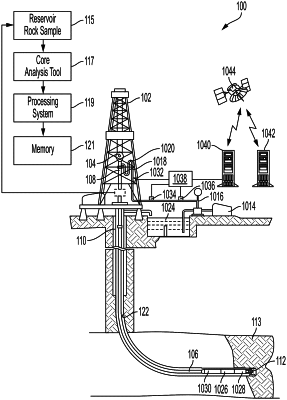| CPC G01V 3/26 (2013.01) [E21B 43/25 (2013.01); G01V 3/34 (2013.01)] | 20 Claims |

|
1. A computer-implemented method comprising:
receiving, by a computing device from one or more formation evaluation sensors, measurements of formation parameters during a first stage of a downhole operation within a reservoir formation;
determining, by the computing device, a correlation between each of the formation parameters and a target parameter of the reservoir formation, based on the received measurements;
selecting, by the computing device, one or more of the formation parameters as input parameters for a symbolic regression model, based on the correlation determined for each formation parameter;
training, by the computing device, a symbolic regression model to generate a plurality of candidate formation models representing the target parameter of the reservoir formation, based on the selected input parameters;
applying, by the computing device, one or more optimizations to the plurality of candidate formation models to determine a target petrophysical model of the reservoir formation; and
estimating, by the computing device, values of the target parameter for at least one layer of the reservoir formation, based on the target petrophysical model,
wherein a second stage of the downhole operation is performed within the at least one layer of the reservoir formation, based on the estimated values of the target parameter.
|